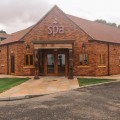With the recent warmer days and, hopefully, the arrival of Summer, our thoughts turn to outdoor activities, and I don’t just mean throwing a few sausages on the barbie. Living in Nottingham there are so many hidden gems and places to visit that you can be spoilt for choice. Despite living in the City my entire life one place I’d never been to was Colwick Country Park. When I think of Colwick it’s normally of the industrial estate or maybe for a little retail therapy in Next at the Victoria Park or a frantic visit to B&Q because something’s sprung an untimely leak, but beyond the shops and industrial estate, just of the A612 sits a somewhat lesser visited area of local beauty. Nestled between Sneinton and Colwick village and just a mere mile from the city centre with great transport links is the 125 acre local nature reserve Colwick Park.
Perfect for a summer stroll, with quiet pathways spanning the site, the woodland used to be part of the grand Colwick Hall estate but is now managed by Nottingham City Council and is home to tons of wildlife including many colourful wild flowers, a variety of birds such as kestrels, jays and woodpeckers along with large deciduous areas of woodland, with many species of tree. Parts are classified as ‘ancient’ and we’re not just talking about it being as old as the grandparents. Historians believe it’s been there since before 1600 and probably much longer but is typical of those found along the steep land bounding the Trent Flood Plain. Not only is the park a very important site for wildlife but it also contains an official ‘Site of Special Scientific Interest’ (SSSI), it may sound like something from the X Files but it’s not, it was in fact given the title in 1995 due primarily to the wetland side of the site and its 16-17 species of dragon fly and is one of a very small amount in Nottingham City. The park, which was listed as a nature reserve in 2004, also boasts two tranquil lakes which are fished for trout and court fishing.
Here comes the history bit. Earliest references to the estate occur on the death of William de Colwick in 1362, when it passed by the marriage of his daughter Joan to Sir Richard Byron, it stayed with the Byron family who lived there for over 150 years before moving to Newstead Abbey. Later in 1775 its new owner John Musters replaced all the older buildings with the present hall. The magnificent Grade 2 listed building still stands and is now a hotel with views towards the race course and is also home to the award winning Georgetown Restaurant where you can enjoy a traditional afternoon tea or choose from a fantastic a’ la carte menu specialising in Malaysian dishes.
There are panoramic views of the Trent Valley – as far as Belvoir Castle and from the southern point the view opens up to West Bridgford and beyond. From other parts you can look out towards Sneinton and the City Centre with the windmill evident in the skyline
So this Summer why not take some time out and lose yourself in history and wildlife right on your door step.
Tanya Raybould



